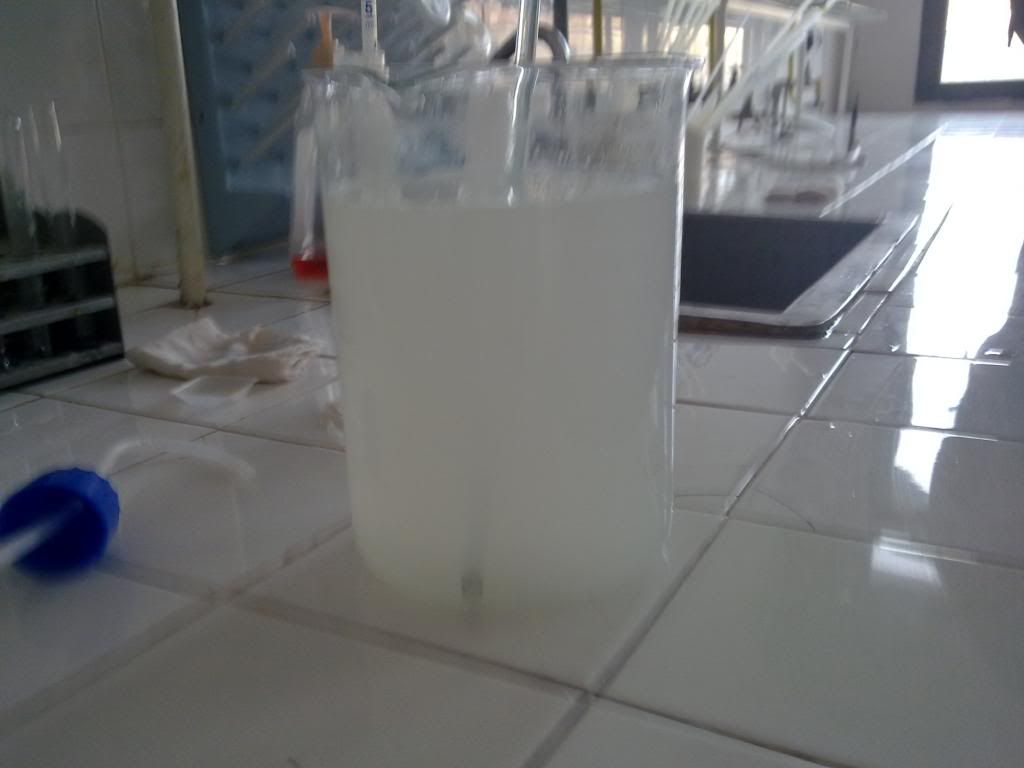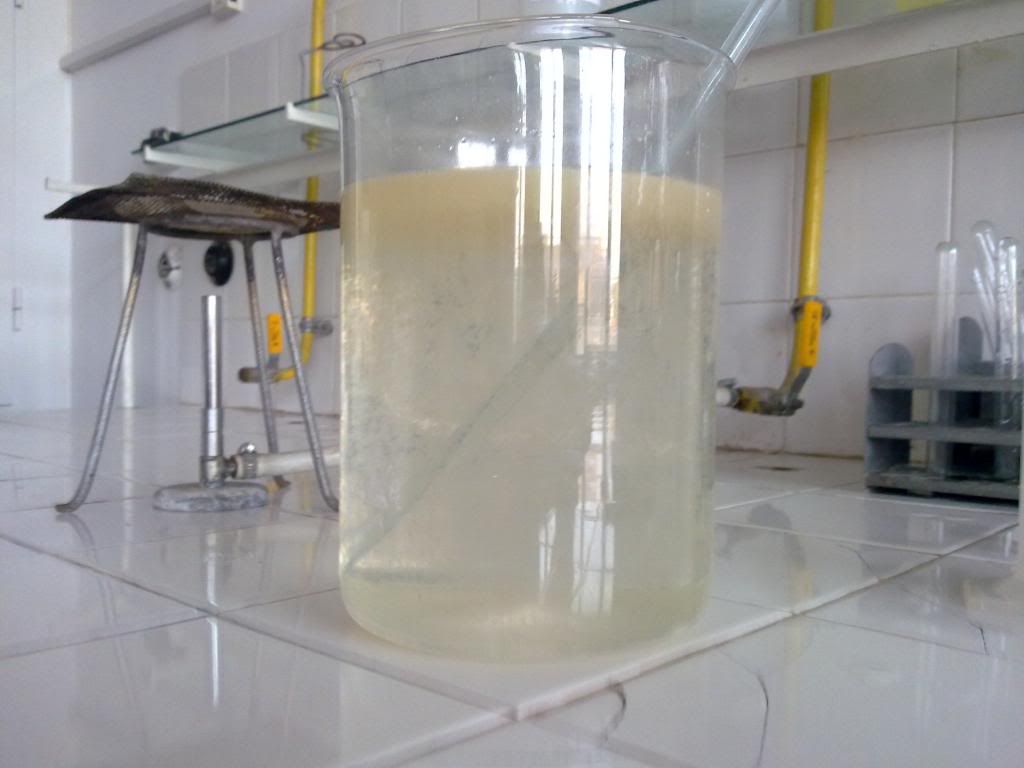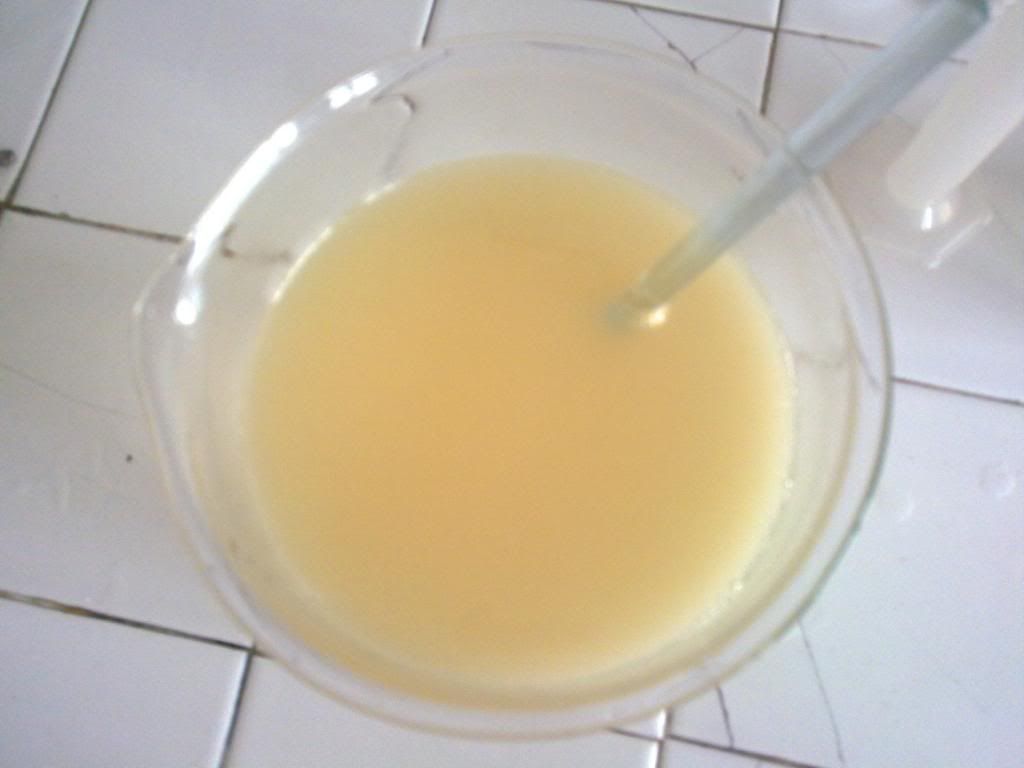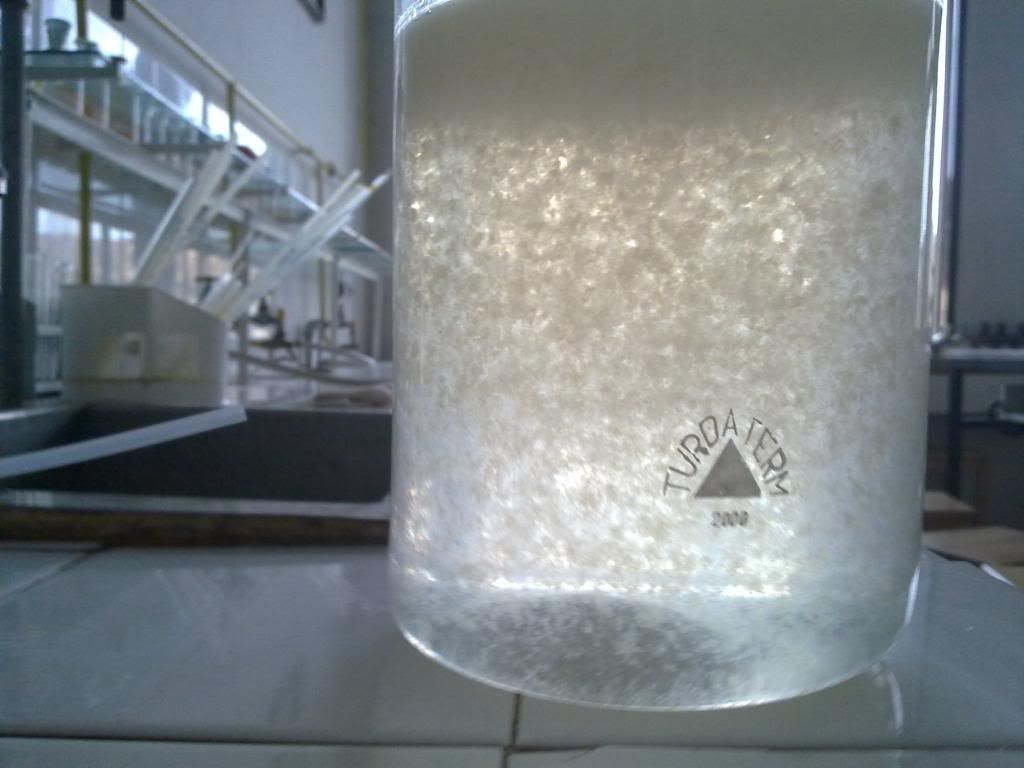zgript
Harmless

Posts: 7
Registered: 4-11-2012
Member Is Offline
Mood: No Mood
|
|
NaCl and Potassium Ferrocyanide
For some reason this 2 substances get packed in a box and sold as Salt. I do not like Ferrocyanides and acording to my country wikipedia it is
extremly toxic while heated over 100 degrees ( forming KCN and a combination of Fe and CL from salt )
Sine i`m a student at a university of pharmacy and got a lab and almost any substance i need i decided to find out.
1. How can i separate the 2 ( NaCl and Potassium Ferrocyanide ) and also find out how much Ferrocyanide is there in the salt ?
2. Is my wikipedia wrong or right ? does it really decompose like that ? what are the needed conditions ?
I plan to test for the moment like 5-6 types of market salt, use bio pure salt as my witness substance. Also i heated those salts to 190 degrees and i
will test both the heated and unheated salts ( probably by adding FeCl3 for obtaining the blue and comparing with different concentrations of
potassium ferrocyanide till i obtain similar colorations )
p.s. Also i tryed something like heating water + salt in a berzelius which has a filter on top of it and another berzelius with his mouth down. This
way the vapors go through the filter, reach the 2nd berzelius, condense on the walls, then falls in tiny drops, the solid substance remaining on the
filter.
( We did something similar when we tryed to purify benzoic acid - not sure if it has any effect on the salt )
[Edited on 4-11-2012 by zgript]
|
|
|
unionised
International Hazard
    
Posts: 5102
Registered: 1-11-2003
Location: UK
Member Is Offline
Mood: No Mood
|
|
Cyanide is toxic because it binds to metal ions that the body uses like copper and iron.
In ferrocyanides the cyanide is already bound (to iron) and it tends to stay there. Ferrocyanide isn't very toxic.
http://en.wikipedia.org/wiki/Potassium_ferrocyanide#Toxicity
It will decompose if heated and one of the products will be potassium cyanide, but If I remember rightly, you need to get it red hot before that
happens so it won't happen with ordinary cooking.
Please let us know if there's enough ferrocyanide in the salt to give a blue colour with FeCl3.
|
|
|
zgript
Harmless

Posts: 7
Registered: 4-11-2012
Member Is Offline
Mood: No Mood
|
|
Tomorrow i`ll make the experiment and will post the results.
according to my chem book the sensibility of the reaction is 0.0005 mg/ml so obtaining a blue color should be possible.
also if i remember right a " salt bath " ( i think nowadays it is used sand or asbestos filters ) reaches around 800 degrees ( i use salt so that i
don`t put glass or tubes directly on fire ) so i am interested in what happens with postasium ferrocyanide at or bellow 800 degrees
|
|
|
watson.fawkes
International Hazard
    
Posts: 2793
Registered: 16-8-2008
Member Is Offline
Mood: No Mood
|
|
Quote: Originally posted by zgript  | | 1. How can i separate the 2 ( NaCl and Potassium Ferrocyanide ) and also find out how much Ferrocyanide is there in the salt ? |
The amount of ferrocyanide as an anti-caking agent is measured in parts per million. While determination of the composition is
possible with traditional wet chemistry, it won't be easy.
|
|
|
zgript
Harmless

Posts: 7
Registered: 4-11-2012
Member Is Offline
Mood: No Mood
|
|
watson.fawkes, so the quantity of ferrocyanide in salt is too low and i will not obtain that blue i`m looking for ?
|
|
|
blogfast25
International Hazard
    
Posts: 10562
Registered: 3-2-2008
Location: Neverland
Member Is Offline
Mood: No Mood
|
|
Quote: Originally posted by zgript  | | watson.fawkes, so the quantity of ferrocyanide in salt is too low and i will not obtain that blue i`m looking for ? |
You've basically answered that question yourself, higher up.
If common table salt contained enough ferrocyanide to cause Prussian Blue to form with Fe (III) salts, several of us would have accidentally stumbled
on that.
Still curious to see your results.
[Edited on 4-11-2012 by blogfast25]
|
|
|
zgript
Harmless

Posts: 7
Registered: 4-11-2012
Member Is Offline
Mood: No Mood
|
|
Science acording to a law found on net, you can`t use more than 20 mg/ kg of table salt, i started with it.
I needed 10mg of pure potassium ferrocyanide to equal the 0.2ml used for testing ( 50g/l (R) )
So i started by mixing 500g of salt with 1.4-1.5 L water ( with the limit of the reaction at 0.0005 mg/mL i could have added more but i wanted the
salt to form with water a saturated solution )
Once all was done, i added a few drops of FeCl3 wich made the solution a bit yellow and also formed at the surface a form of precipitate.
no blue color was present.
another thing: I kept some (a few milliliters ) of that ( NaCl + Water + FeCl3 ) solution and added like 4-6 drops of hexacianoferrate but again no
blue was obtained.
Did i failed the experiment ? What happened ?
|
|
|
ScienceSquirrel
International Hazard
    
Posts: 1863
Registered: 18-6-2008
Location: Brittany
Member Is Offline
Mood: Dogs are pets but cats are little furry humans with four feet and self determination! 
|
|
At less than 10mg in around a litre and a half of water I think you are way beyond the limits of wet chemistry.
Even if the Prussian Blue did form it would be in incredibly tiny particles.
Maybe you could membrane filter the solution to retrieve them but it would only be a faint blue stain on the filter.
|
|
|
zgript
Harmless

Posts: 7
Registered: 4-11-2012
Member Is Offline
Mood: No Mood
|
|
i still do not know if i failed or not but i did my best.
If anyone has ideas, that including how to separate or extract Ferrocyanide from salt, or identify it more securely ( salt is not pure, it has a lot
of things that could form blue as my teacher said ) please say here.
This was more my play since my teacher said i won`t get a result but i`m free to test it out. So she is waiting for me to bring some more exact stuff
if i want to continue it.
|
|
|
Bezaleel
Hazard to Others
  
Posts: 444
Registered: 28-2-2009
Member Is Offline
Mood: transitional
|
|
As Science Squirrel suggestes, I'd filter the solution. I'd use a filter of the finest pore size you can obtain.
On a side note, a year ago or so, I bought a kg of table salt that had hexacyanoferrate in it, next to silicon dioxide. This yielded a solution that
was almost completely clear, but after standing for a day or so, on the bottom a "nebula" had formed. Filtering yielded a solution that did not have
this property anymore, so apparently, the very fine silicon dioxide could be filtered out, because the particles coalesce. Filtration immediately
after dissolution of the table salt did not filter out the silicon dioxide. This is to say, that maybe after standing, you might be able to filter out
the Prussian Blue also, due to the formation of larger particles.
|
|
|
zgript
Harmless

Posts: 7
Registered: 4-11-2012
Member Is Offline
Mood: No Mood
|
|
thanks for the advices, unfortunately there was another lab 20 minutes after i finished so i had to clean, trow everything, i`ll post some pictures of
the experiment soon







[Edited on 7-11-2012 by zgript]
|
|
|
MrHomeScientist
International Hazard
    
Posts: 1806
Registered: 24-10-2010
Location: Flerovium
Member Is Offline
Mood: No Mood
|
|
Nice pictures, but it would really help if you wrote what was happening in each! You mentioned an experiment you tried upthread, but I'm not sure if
that is what you did here. In any case, posting details in the same post as the pictures would help make things more clear. If you can't edit by now,
post again with "picture #1 I did ... , picture #2 I did... , etc."
Just a friendly suggestion 
|
|
|
zgript
Harmless

Posts: 7
Registered: 4-11-2012
Member Is Offline
Mood: No Mood
|
|
According to a law found on net, you can`t use more than 20 mg/ kg of table salt, i started with it.
I needed 10mg of pure potassium ferrocyanide to equal the 0.2ml used for testing ( 50g/l (R) )
So i started by mixing 500g of salt with 1.4-1.5 L water ( with the limit of the reaction at 0.0005 mg/mL i could have added more but i wanted the
salt to form with water a saturated solution )
This is picture 1 ^
In picture 2-3 you can see the FeCL3 in water+salt solution.
In picture 3,4,5 you see how they looked like after some mixing with the glass rod.
In picture 5 i added some extra salt and you can see the particles of salt and probably Fe from FeCl3 or something
|
|
|